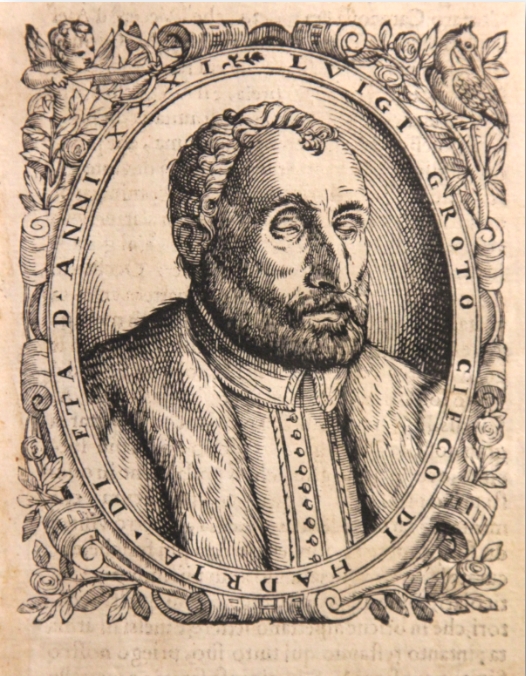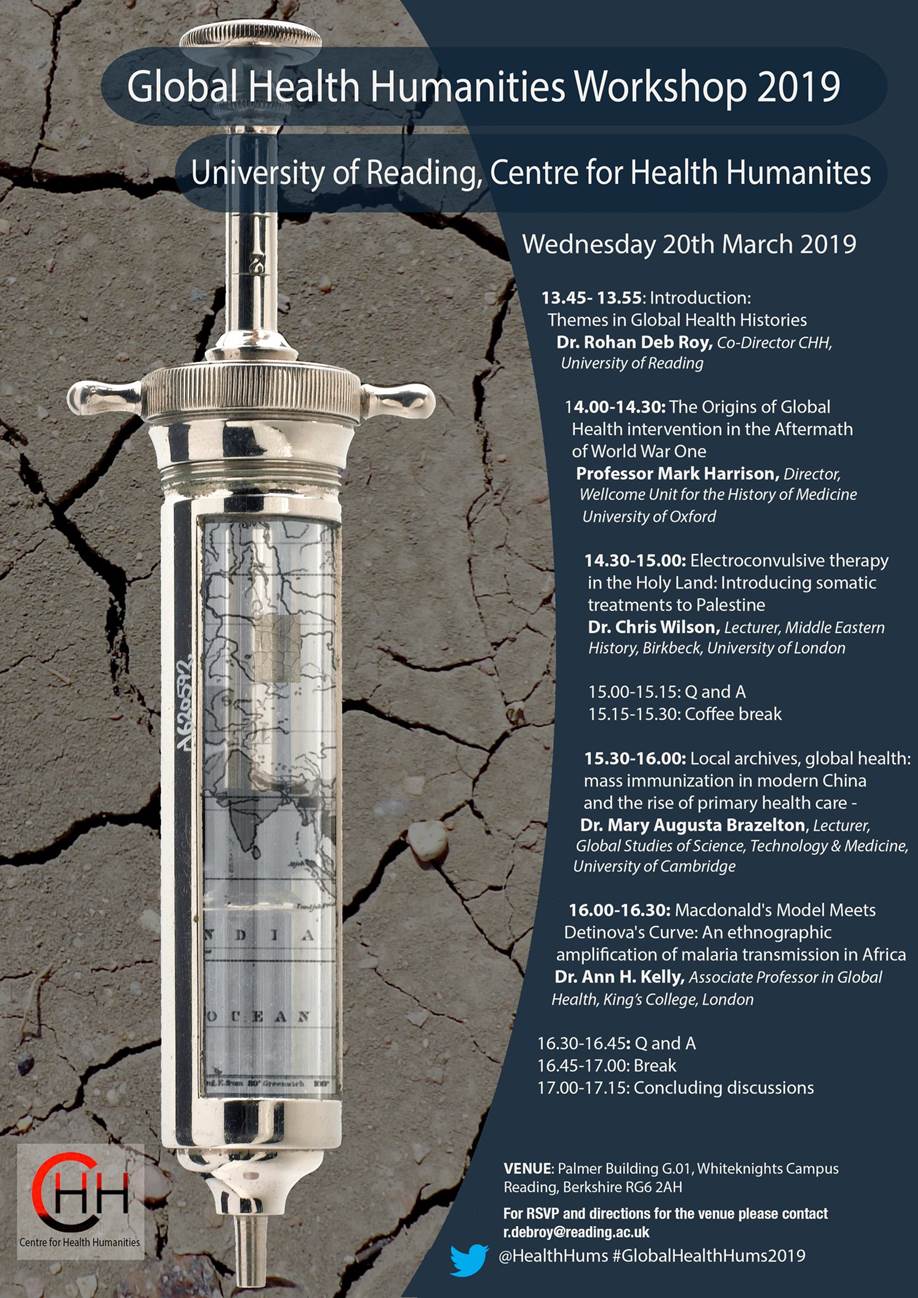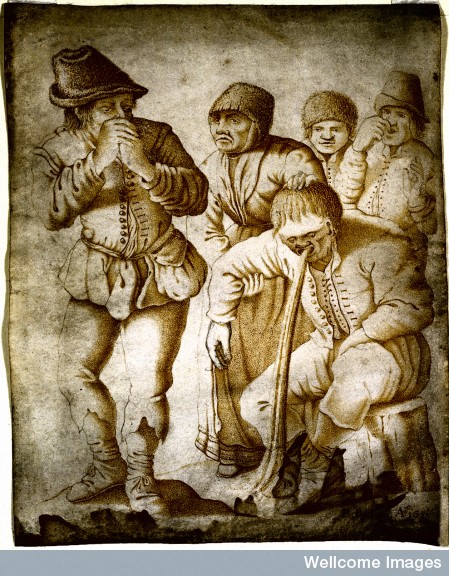Not everyone can afford to be anxious about Coronavirus – some are more concerned about managing their long-term ailments. Amie Bolissian provides a historical perspective on this tendency, drawing on her Wellcome Trust-funded research on older people’s illness experiences in early modern England.
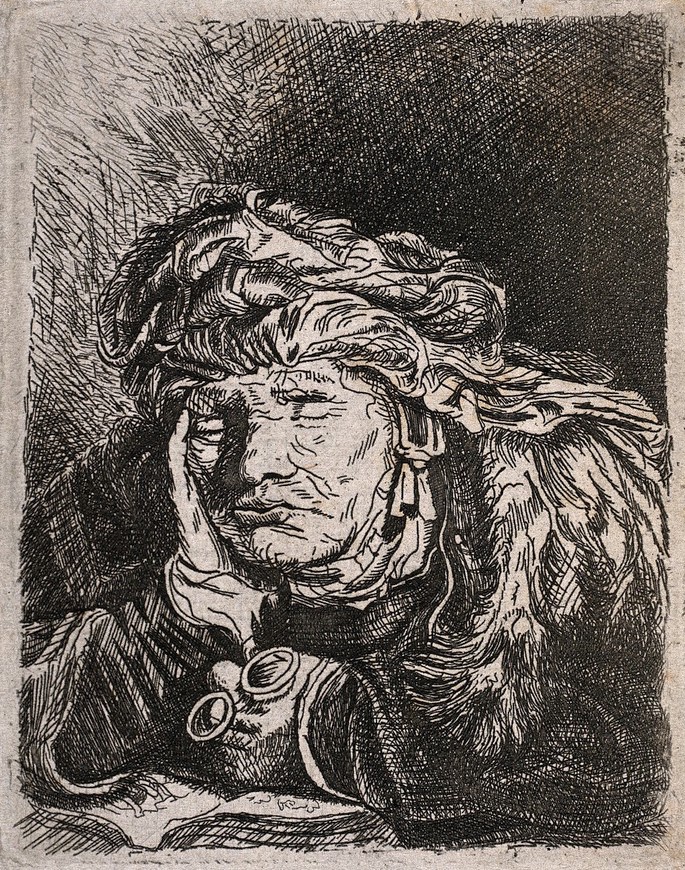
An old woman falling asleep over reading a book. Etching after Rembrandt. Credit: Wellcome Collection. Attribution 4.0 International (CC BY 4.0)
Lately, I’ve been calling my mum far more than usual. She’s seventy, lives in the most polluted part of East London, with an impressive list of chronic conditions I can’t spell, and also happens to be one of my very best friends. Every time I read a new terrifying statistic about the dangers of COVID-19 for older or ‘vulnerable’ people, I panic call her, which I’m sure is not annoying at all.
The other day, my opening demand, “Mum, mum…How are you?!”, elicited a response that made me pause: “Actually”, she said, “I didn’t sleep last night. My stomach is playing up, and I’m worried it’s because I’m not getting enough exercise”. Of course, at this point, I should have expressed sympathy and asked her if there was anything I could do to help. But, because I live in the self-involved bubble of doctoral research, what I actually said was, “Oooooh…that response is fascinating, because early modern diarists also seemed to be more preoccupied with their chronic conditions than with the raging epidemics around them…” Luckily, my mum has been incurably curious her whole life, and was happy to jump straight down this research rabbit hole with me.
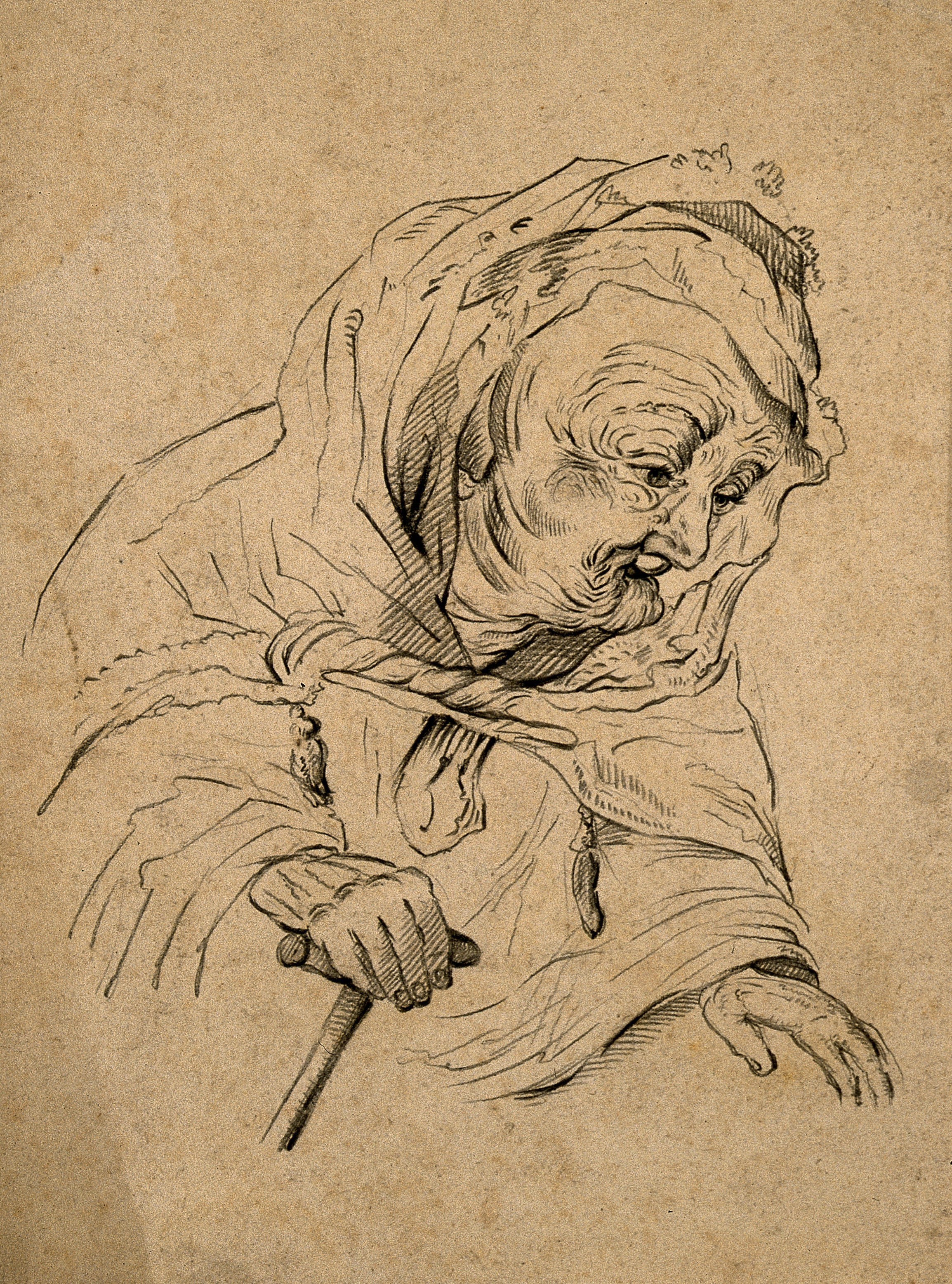
Credit: A very old woman. Pencil drawing after Rembrandt. Credit: Wellcome Collection. Attribution 4.0 International (CC BY 4.0)
Like children and pregnant women, the ‘elderly’ have often historically found themselves classified as a vulnerable patient group, especially with respect to virulent epidemics.1 This was definitely the case in early modern England (c.1550-1750). Contrary to popular assumptions, there were plenty of older people around at this time (c.20% of adults were over sixty), and ageing was thought to bring its own specific health challenges.2 Medical books described old age as ‘A meer lump of infirmities’, and the ‘aged’ body too weak and decayed to be cured of most diseases.3
So, were those over fifty or sixty considered automatically doomed during times of plague? Well, no, it was more complex than that. ‘Old folk’ were in a unique medical category. In contrast to the current situation, the elderly were seen as the least likely to catch most infectious fevers. Lacking a modern understanding of immunity, or viral and microbial contagion, this had more to do with their constitutions. Old bodies were thought to be cold, dry, and clogged up, which meant that ‘hot diseases’ like fevers failed to spread through their shrunken, blocked passages, and cold flesh. However, according to medical writings, if the weak elderly did catch the plague or small pox then unfortunately, like today, they were also believed to be the most likely to die from them. What did this mean for those understood to be ‘old’ at this time?
When infectious diseases broke out in their communities, it is clear that older people did voice feelings of fear and distress. Some tracked the progress of plague and smallpox in their diaries, and most, in this highly religious period, begged God to keep their loved ones safe. But I have found far fewer expressions of personal anxiety about contagious disease. Rather, the overwhelming preoccupation for older people, women or men, was the day-to-day management of their existing, often chronic ailments.4

Detail of Interior with a surgeon attending to a man’s foot, and three other figures. Oil painting by a German (?) follower of David Teniers the younger. Credit: Wellcome Collection. Attribution 4.0 International (CC BY 4.0)
In the autumn of 1678, 63-year-old Essex farmer and minister Ralph Josselin was very anxious when his beloved adult daughter Bettie, and his ‘deare wife’ Jane, both fell sick of smallpox. He wrote that the news ‘entred deepe’ in him. He asked God ‘in mercy preserve her’ and the rest of the family, ‘as I trust in him he will’, and later added, ‘it proved so’, for both women happily recovered. Josselin was certainly worried for his family over this episode, but he does not appear to have been overly concerned for himself. By contrast, his personal concerns centred on his chronic ailment, a ‘very painful’ leg inflammation. Josselin detailed symptoms, treatments, anxieties, and prayers. Over multiple entries, he described the inflammation as ‘deeply sore and bleeds much’ and ‘running and bleeding’, he mentioned the surgeon whom he consulted – a Mrs Doughtie – and a ‘nutmeg’ medicine he took. Fears about epidemics were present, but they did not eclipse the daily embodied reality of pain and disordered health.5
Another example comes from the diary of the Norfolk gentlewoman Elizabeth Freke, aged about seventy, and suffering from a chronic cough, asthma and a ‘fixxt plurisy’. In the winter of 1712, Elizabeth recorded that smallpox entered her household. She was medically knowledgeable, and accustomed to treating herself as well as her family, friends, and neighbours. Her grandson and maids all contracted the disease and were treated at home, but when her manservant Isack fell sick, she wrote that she ‘putt [him] out of my house’. Freke’s explanation did not refer to fears about contagion at all. Rather, she writes that she is ‘very ill myselfe and quitt tired with docters and nurses for above neer two months’. Her long-term ailments had rendered her immobile: for a year she had ‘hardly bin across’ her chamber ‘without the assistance of two to help’. The daily management of this condition was all consuming, and it appears that the Isack’s illness was the final straw – she could not bear the additional inconveniences which it would have brought.6

Sofonisba Anguissola on her deathbed, Van Dyck, c.1625 Wikimedia
Why were these older people more worried about their long-term illnesses than contracting epidemic diseases? It is possible that the diarists were aware of medical notions that the elderly were more resistant to these infectious fevers, although there is no explicit evidence of this. The sources suggest a number of other reasons.
- The immediacy of the pain and other symptoms may have overwhelmed other considerations, especially notoriously agonising conditions like gout, pleurisy, and kidney stones, which were often described as ‘torture’. As the minister Robert Harris wrote in 1626, during some ailments ‘the soule…is so taken up and transported with paine & anguish, that it mindes nothing but what cannot be had, [such as] sleep and ease’.
- Older people had lived through past epidemics. This may have given them the perspective to foresee a time when the plague had passed, but their chronic disease remained – threatening their health and wellbeing.
- The third explanation centres on responsibility and control. Epidemics were widely interpreted as punishments for the sins of the whole community, rather than the individual’s wrongdoings. Conversely, most other illnesses, including chronic ones, were seen as ‘special providences’ for the patient, sent by God as a correction for specific sins or a test of faith. While this did not stop ordinary people from attempting to prevent or treat epidemic diseases, they did tend to view the eventual course of such illnesses as largely under the control of God. By contrast, the management of chronic symptoms, was the unique responsibility of the patient, and something to be continually monitored, reviewed, and described in their diaries. Rarely losing hope for a possible recovery, most older patients actively sought treatment and care for these long-term conditions, despite the raging epidemics outside their doors.
The assumption I’d made about my Mum – that her worries must surely focus on the threat of catching an infectious pandemic disease – was thus both mistaken and ableist. The term ‘underlying conditions’ is misleading, as it suggests that pre-existing health conditions are somehow hidden or buried.7 For some older patients, both in the past and present, this could not be further from the truth: chronic conditions were palpably apparent, and therefore understandably they took precedent over diseases not yet caught.
- I am using early modern terminology to describe older adults such as ‘old’ or ‘elderly’, but I am aware that these are not always appropriate nor accurate today.
- Joel Rosenthal, Old Age in Late Medieval England (1996), 171; For life expectancy rates, see: James Sharpe, Early Modern England: A Social History 1550-1760 (1987), 38-9.
- David Irish, Levamen Infirmi (1700), 123.
- So far, these have been the only two genders identified in the diaries.
- Alan MacFarlane ed., The Diary of Ralph Josselin, 1616-1683 (1976), 614-616.
- Ray Anselment ed., The Remembrances of Elizabeth Freke, 1671-1714, (2001), 286-287, 282.
- Robert Harris, Hezekiahs recovery (1626), 30.
- The term ‘Underlying conditions’ is used on the official UK government webpage about social distancing: https://www.gov.uk/government/publications/covid-19-guidance-on-social-distancing-and-for-vulnerable-people/guidance-on-social-distancing-for-everyone-in-the-uk-and-protecting-older-people-and-vulnerable-adults
More information on Amie’s project can be found here: https://blogs.reading.ac.uk/irhs/the-aged-patient-in-early-modern-england-by-amie-bolissian-mcrae/. She can be contacted here: a.bolissian2@reading.ac.uk or @AmieBolissian on Twitter. Orcid: https://orcid.org/0000-0003-4816-8809
 Eleanor Crook is a British sculptor with a special interest in mortality, anatomy and pathology, who exhibits internationally in fine art and medical and science museum contexts. She studied Classics and Philosophy at Oxford before training in sculpture at Central St Martins and the Royal Academy Schools in the early 90s, where she specialised in wax modeling, lost wax bronze casting and other lifelike media. She pieced together a knowledge of Anatomy from London’s medical museums and the dissection room as a medical artist, finding figurative art to be not in favour at the time; even so, her Classical background meant that communing with statues, and therefore the body, were second nature. Crook considers her work ‘more effigy than statue’, as they are imbued with a convincing sense of life. She has developed close, long-term collaborations with medical museums and historic anatomical wax collections such as the Gordon Museum of Pathology, Guy’s Hospital, Ghent University Museum, and the Vrolik Museum Amsterdam, where she continues wax modeling traditions and combines research through human dissection and studying the history of anatomical model-making. Most recently, she has worked with museum project partners on creating a genre of anatomical Expressionism, uncanny yet rooted in medical investigation, mythology, and the mysteries of the mind. To learn more about Eleanor Crook, her work, and find selected art for sale, visit https://www.eleanorcrook.net
Eleanor Crook is a British sculptor with a special interest in mortality, anatomy and pathology, who exhibits internationally in fine art and medical and science museum contexts. She studied Classics and Philosophy at Oxford before training in sculpture at Central St Martins and the Royal Academy Schools in the early 90s, where she specialised in wax modeling, lost wax bronze casting and other lifelike media. She pieced together a knowledge of Anatomy from London’s medical museums and the dissection room as a medical artist, finding figurative art to be not in favour at the time; even so, her Classical background meant that communing with statues, and therefore the body, were second nature. Crook considers her work ‘more effigy than statue’, as they are imbued with a convincing sense of life. She has developed close, long-term collaborations with medical museums and historic anatomical wax collections such as the Gordon Museum of Pathology, Guy’s Hospital, Ghent University Museum, and the Vrolik Museum Amsterdam, where she continues wax modeling traditions and combines research through human dissection and studying the history of anatomical model-making. Most recently, she has worked with museum project partners on creating a genre of anatomical Expressionism, uncanny yet rooted in medical investigation, mythology, and the mysteries of the mind. To learn more about Eleanor Crook, her work, and find selected art for sale, visit https://www.eleanorcrook.net 














